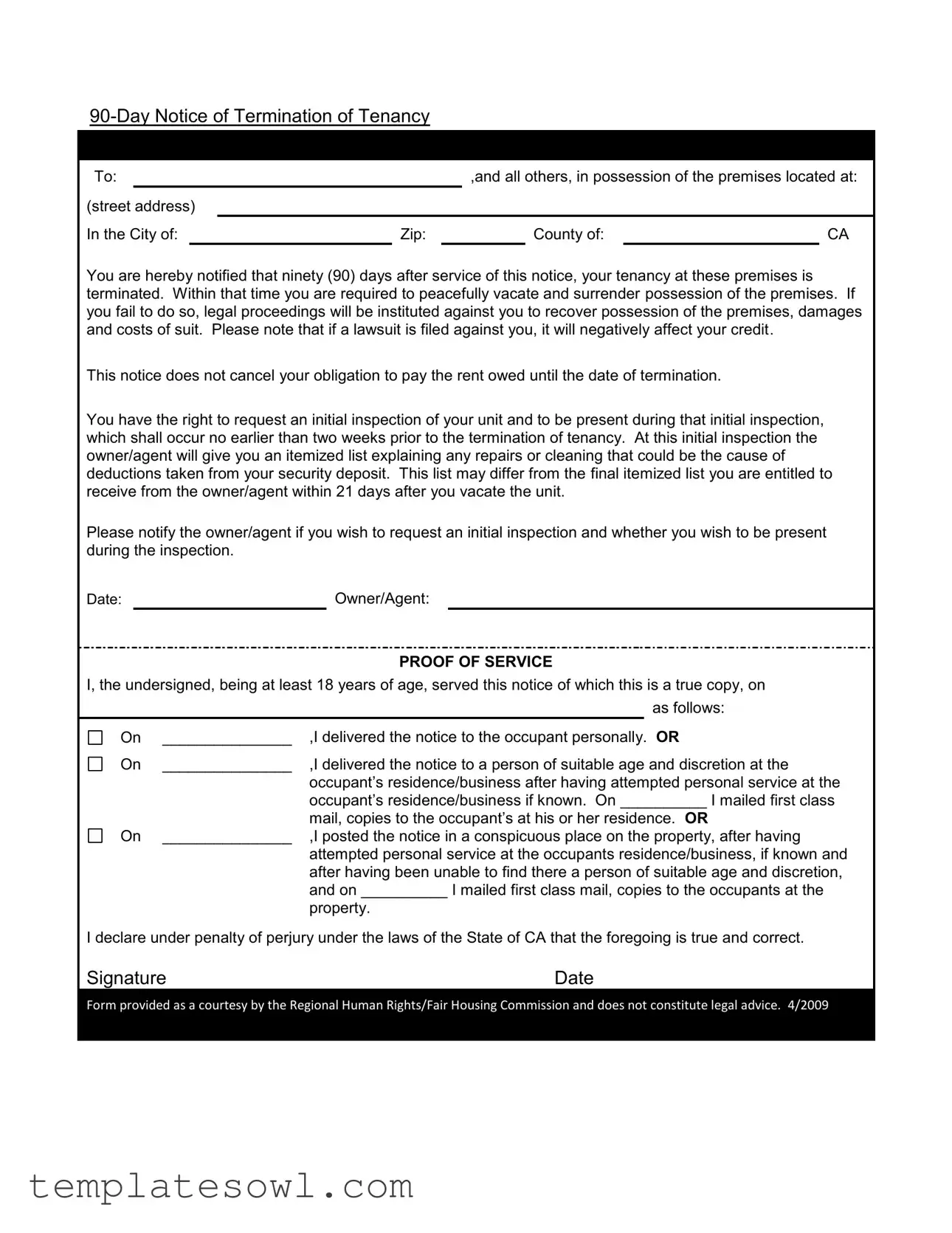Filling out the 90-Day Notice to Move Out form can be a daunting task, and mistakes may lead to complications later. One common error is incomplete address information. It’s essential to provide the full address of the premises, including the street name, number, city, zip code, and county. Omitting any details can delay the notification process or create confusion about which property is being referenced.
Another frequent mistake involves the failure to specify the recipient. You must clearly state to whom the notice is being directed. This also includes indicating whether the notice is for just the primary tenant or all individuals in possession of the residence. Neglecting to do so can undermine the effectiveness of the notice.
Incorrect dating of the notice is yet another misstep. The form requires a specific date when the notice is issued. If this date is inaccurate or missing, recipients may misunderstand the timeline and fail to vacate in a timely manner. Tenancy termination timelines are crucial, and small errors can result in disputes.
Some individuals inadvertently overlook providing proof of service. This section is crucial as it documents how the notice was delivered. There are various methods such as personal delivery or mailing, and each method has specific requirements. Failing to complete this section appropriately may lead to complications should legal action be necessary down the line.
Individuals often misjudge the importance of initial inspection requests. Many fail to express their desire for an initial inspection. This inspection is vital for both parties to understand the condition of the property. It also ensures that tenants receive an itemized list of any potential deductions from their security deposit.
Another common oversight involves the lack of clarity in communication. Words can be misinterpreted, especially when legal repercussions are involved. It’s important to communicate clearly and concisely. Ambiguities can lead to complications later when it arises whether the tenant received notice.
The presence of signatures is another critical aspect that people often neglect. Ensure that all required signatures are provided, especially the owner/agent's signature. A missing signature might render the notice ineffective, which could affect eviction proceedings.
Some may think that terms and obligations related to rent payments are not important to include, but this is a significant error. The notice explicitly states that tenants remain responsible for rent payments until the termination date, and failing to mention this may lead to misunderstandings regarding financial obligations.
Additionally, it’s vital to recognize the necessity of providing a timely response if an initial inspection is requested. Waiting too long to communicate about the inspection or failing to respond altogether can lead to missed opportunities to address potential issues with the property.
Lastly, many individuals do not consider the impact of a lawsuit on their credit. If legal proceedings arise due to the tenant's failure to vacate, it can have long-lasting effects on their financial reputation. Highlighting this consequence in the notice is essential for ensuring tenants are fully aware of the implications of their actions.

